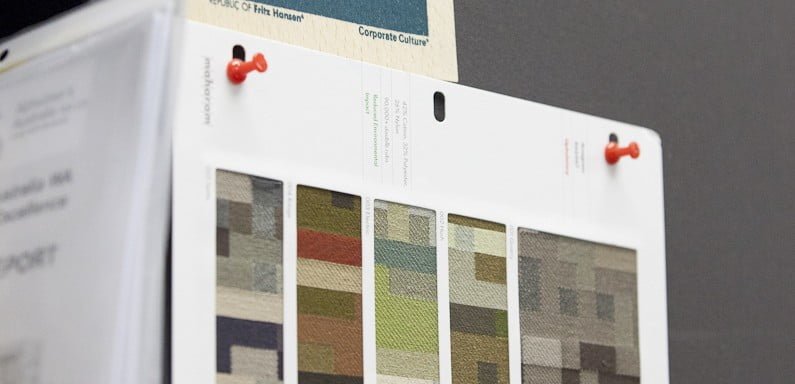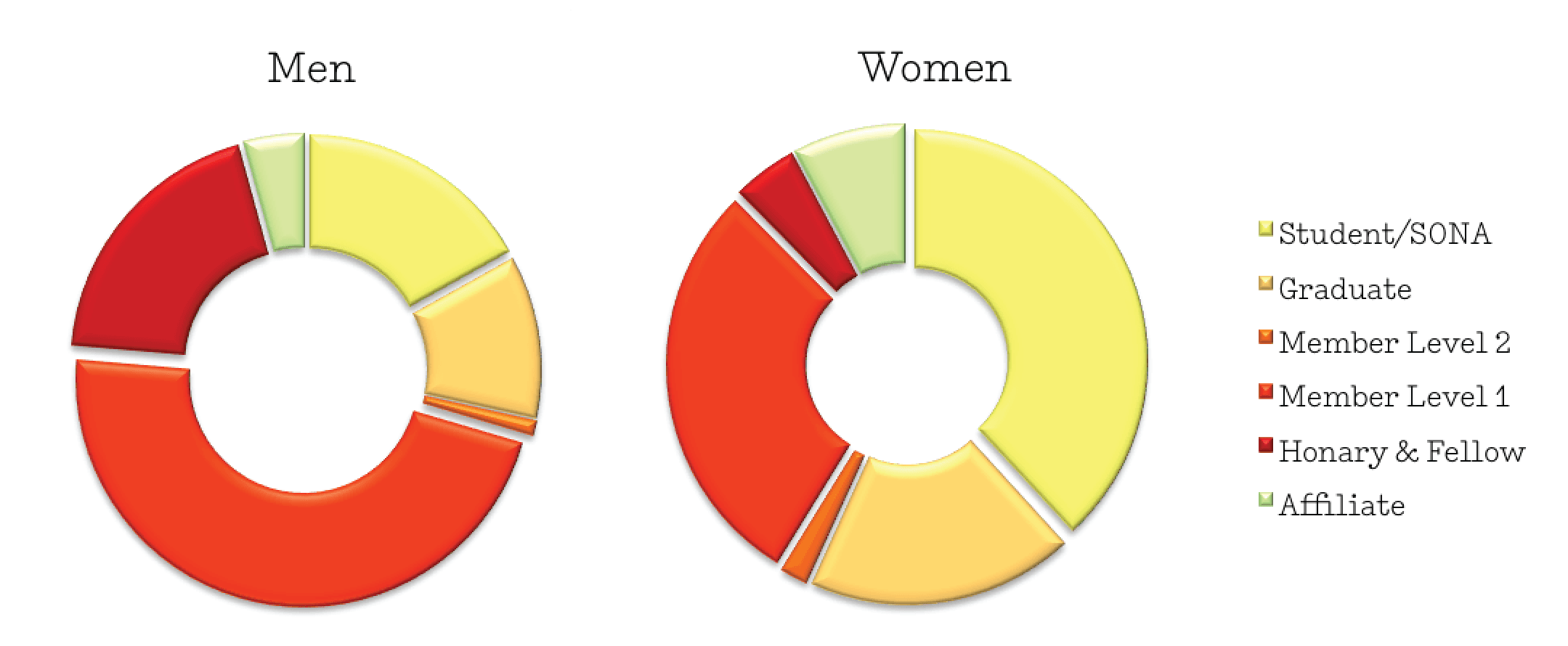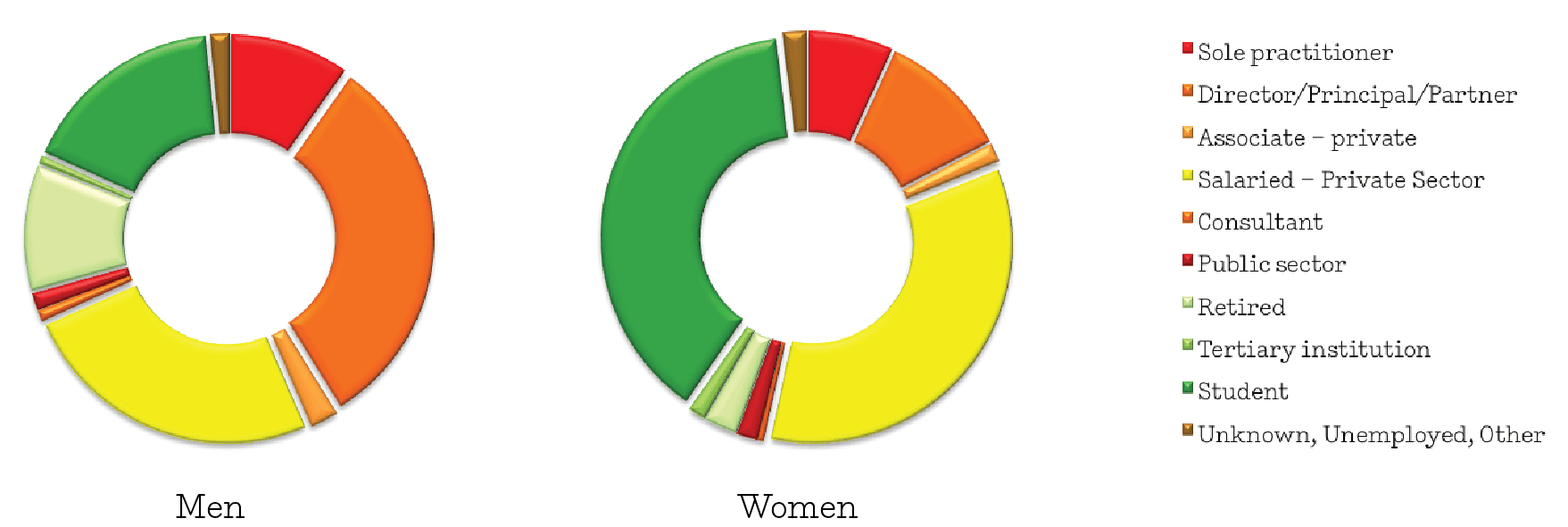In the third part of Gill Matthewson’s update of statistical knowledge about women’s participation in architecture, she explores the membership of the Australian Institute of Architects.

Membership of the Australian Institute of Architects is another way of measuring participation in the profession, although it needs to be noted that membership is not compulsory and many architects choose not to belong.
As of January 2013, there are 11,743 members of the Institute and 3,320 of them are women – this is 28%, which is higher than the registered proportion (and an increase on the 2012 percentage which was 26%). However, there are different categories of membership and the overall pattern of membership differs quite markedly for each gender.1

Membership categories by gender
A minimum 65% of the women members are in membership categories that indicate they are definitely not registered architects. These categories are: affiliate, graduate and student (the three categories coloured green, yellow and pale orange in the above charts). With the male membership only a minimum 33% of the men fall into these same definitely-not-registered categories. (Note: Member Levels 1 and 2 are for the registered, formerly registered, or eligible for registration. This means that these figures of 65% and 33% not registered could be higher.)
Overall, 42% of the total membership is in these definitely-not-registered categories. This reminds us that the profession is larger than any count of registered architects can give us, but it is even larger for women.

Women as a percentage of each membership category
A similar difference along gender lines is visible when one analyses the membership according to their employment category.

Membership by employment category
In terms of employment categories, 44% of women are in what might be called non-practising areas (student, retired, etc). In contrast, 28% of the men are in such categories. This is a less dramatic difference than membership types, but it is still notable.

Women as a percentage of each employment category
Sole Practitioners, Partners and Directors/Principals of architectural practices are positions that reflect those who have reached a certain level of experience and often influence in the profession. Women constitute 14% of these categories.2 They do, however, tend cluster in the Sole Practitioner segment, rather than as Directors or Principals of larger firms. Partners are generally of smaller firms. The largest segment is the Director/Principal one – women are 11% of this category but 22% of Sole Practitioners.


Owner/Directors of architecture companies by firm size
In 2004 Paula Whitman reported that women were less than 1% of the total number of registered architects who were directors of architecture companies in Queensland.3 The current Australian Institute of Architects statistics seem to indicate that this figure is no longer an accurate indication of the percentage of women directors.
However, Institute membership is not entirely representative of the profession. There are, at our latest count, 9,956 registered architects in Australia. If we subtract the number of definitely-not-registered-architects from the Institute membership then the maximum number of registered Institute members is 6,842. This means that a minimum of 3,100 registered architects (getting on towards a third) are not members. We also know that registration does does count all those active in the profession, but it is unlikely that membership of the AIA counts all those non-registered. Consequently, all of the figures on women’s representation in the profession currently available can only ever partial.
- Data from the Australian Institute of Architects, January 2013. Thanks to Effie Panagiotidis.[↩]
- Employment category was cross-checked with membership type. Retired or overseas members were removed for this calculation.[↩]
- Paula Whitman, RAIA, and QUT, Going Places: The Career Progression of Women in the Architectural Profession (Brisbane: Queensland University of Technology, 2005), p 7.[↩]





















1 comments
HillaryHoist says:
Feb 25, 2013
More membership rate scales at the Institute please. We might get more representation then. Part time does not mean part professional, for example.
I perform both academic work and practice work but over the stretch of a year, this all adds up to part-time hours and income – my preferred situation for now. I don’t meet the minimum quota of hours for cheaper academic rates. Nor do I have the practice hours to justify full membership costs.
So I have to choose between Institute membership and insurance – insurance is the winner by several lengths.
Was advised to apply under Section 88 for special circumstances membership rates. Did so. Never got a response.